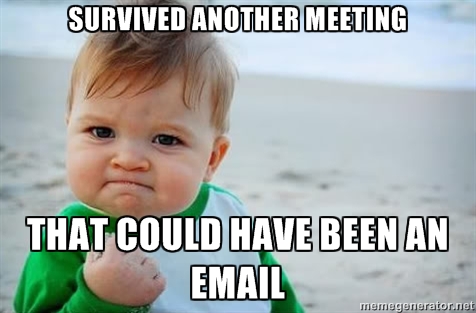What was once a trend has now become an inevitable reality in the natural evolution of the workplace; remote work is not now just a perk, but it’s becoming a necessity for the common well-being of companies and employees. COVID-19 has arrived to revolutionize and restructure systems that we had in place that no longer work for us, and our capacity to work is one of them. Working remotely might be a temporary solution for companies responding to the current crisis, but there is a multitude of reasons that organizations would benefit from transforming to a 100% remote company.
The number of people who work remotely at least once per week has grown by 400% since 2010. This is thanks to the profound impact technology has had in the workplace. We are now able to telecommunicate with our colleagues through applications (such as Slack, Google Hangouts, Zoom), work on documents in real-time, exchange information through email, save documents through cloud-based storage, and work with SaaS solutions. Working remotely was a trend prior to the pandemic because companies realized that modern-day technology has the capacity to uphold an organization working remotely. Here are the benefits that companies have gained from working remotely;
Productivity
Time can limit or exceed productivity. You could either ask your employees to use their time in the morning to face traffic to come into work after completing their own personal tasks of getting the children ready and rushing through breakfast or allow for them to finish their morning tasks in peace to start the day off with the right mindset, the former would create a waste of time and energy that could be redirected into productivity. For one, working remotely removes the need to commute. I’ve personally heard of colleagues commuting anywhere between 10 mins to up to 2 hours. Time is money and this is valuable time that could be spent on work.
It’s not just time that commute kills, but it is also a person’s motivation and morale, which leads to the death of productivity. Commuting is stressful; relying on public transportation, navigating through extreme weather conditions or the absurd amount of traffic a driver has to face day to day without adding an unexpected car accident or construction site are just some examples of how a commuter can already show up to work mentally and physically drained. Working remotely helps employees work in a relaxed environment which enhances creativity and productivity.
Another productivity killer is distractions found in the workplace. If you do a quick Google search of memes about meetings that should have been an email, you will understand that this is a common grievance amongst workers. It’s become such a grievance that people have made jokes and created coffee mugs out of it to display their disdain. Point blank, most meetings could just be an email.
The office setting is more of a social setting which means that productivity is limited due to common human interactions between coworkers filling each other in on the latest of their personal lives. Although humans do need social interaction, which some people would argue as to why a brick-and-mortar is necessary for work, it does limit productivity. Working remotely will help diminish the distractions an employee has to face in order for them to solely focus on their work.
International Pool of Talent
When you limit your ways of doing things to how you’ve always done them, you limit yourself from making the best use of your resources and of hiring the best talent. For example, if your office is located in a small town in the Midwest and, let’s say, you are hiring a developer that is required to come into the office every day. You are limited to the number of developers available in your area and you are limiting yourself to the capacity of their work. These developers from said the town will also understand their value according to demand vs. supply, meaning that they will charge a premium price to get hired. Hiring remote developers will not only be a better use of your resources but could also expand your capacity depending on the skillset of the developer hired. The US dollar is strong, and most remote workers would live well off of a US salary. This means that you can hire a highly-skilled developer from Colombia or Ecuador at a competitive rate. You can read more about this in our cost benefit analysis about hiring in-house vs outsource developers.
Healthier Employees, Lower Turnover Rate
Healthy and happy employees are essential for the health of an organization. Commuting not only diminishes productivity but it also diminishes an employees health. A person’s commute can cause stress that leads to not only a negative mood but also to higher blood pressure and other health related issues correlated to stress. A study conducted by Flexjobs demonstrates that 77% of respondents said having a flexible job would allow them to be healthier (eat better, exercise more, etc.) and 86% said they’d be less stressed. The quality of an employees work would improve as a result of the improvement of said employees quality of life. A happy employee would remain loyal to the company and work for a longer period of time, 82% of employees say they would be more loyal to employers that offer flexible work options.
There is nothing arguably more important than a person's well-being, a person’s time and a company’s money. These three things are best kept up in order for the general health and well being of employees and of the organization that they work for. How do you keep an employee healthy, happy and productive enough to produce impressive results? You reduce their stress-levels, you increase their allotted time for productivity and you allow them to feel control of their work life.
Reduce Costs
The main and most important benefit of transitioning to a 100% remote work team is the increase in financial health of the company. When it comes to operational stability and reliability, reducing costs is the key to longevity. Many companies have been able to see the benefits of cutting overhead costs. Aetna was able to save $78 million with remote workers, According to Forbes, by removing some of their office space. American Express has also reported annual savings of $10-15 million due to their transition to remote work. Remote work reduces the costs of relocation and recruitment, real estate, utilities, turnover costs and business travel. The list of savings are not limited and can continue on over time. Cutting costs alone should be enough to entice any company to revolutionize.
Revolution
The current pandemic that humankind is facing is resurfacing Darwin’s Theory of Evolution. The natural selection process is typically seen as the survival of the fittest which has a connotation of strength and force, however, history will demonstrate that survival of the fittest actually means organisms that are able to adapt, survive and reproduce. COVID-19 has forced us to humble ourselves, we have seen its power to destroy and cause chaos but this pandemic is giving us the strength to reinvent ourselves. This virus has shone light on weak points in certain systems that we had in place, systems that may no longer work for us. It is essential for companies to reframe their ways of working in order to survive and succeed, the times are constantly changing and in order to grow we need to be able to evolve. Transitioning to a 100% remote company would be the modern wave of evolution.
--
If you want to stay up to date with all the new content we publish on our blog, share your email and hit the subscribe button.
Also, feel free to browse through the other sections of the blog where you can find many other amazing articles on: Programming, IT, Outsourcing, and even Management.



